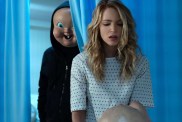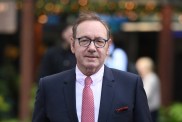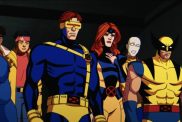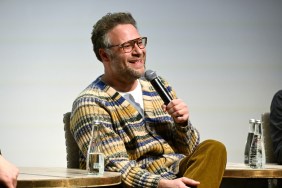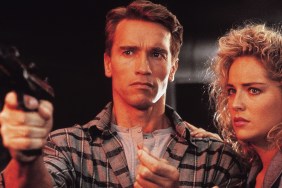There are very few science fiction films from the ’90s that really stand the test of time as well as Paul Verhoeven’s Total Recall, based on Philip K. Dick’s short story “We Can Remember It For You Wholesale,” and it’s hard to believe it’s been 20 years since it came out. It was a pivotal movie for actor Arnold Schwarzenegger, being his biggest blockbuster hit before Terminator 2 the following year, as well as a solid follow-up for Verhoeven, who three years earlier had made his mark on Hollywood with RoboCop. With the number of movies from the ’70s and ’80s being reinvented, it was only time before someone took another look at Philip K. Dick’s story to see how it could connect to modern audiences.
The job of updating the futuristic concept was placed in the hands of “Underworld” mastermind Len Wiseman, who had already branched away from the action franchise he created to helm 2007’s Live Free and Die Hard. Many filmmakers have tried to tackle Dick’s works over the years, some to better effect than others, but Wiseman would not only be following in Verhoeven’s footsteps, but also those of Ridley Scott, Steven Spielberg, Richard Linklater and John Woo.
Last September, ComingSoon.net visited the set of the new Total Recall up at Toronto’s Pinewood Studios to get an overview of the world they’ve created and how it differs from the earlier movie, talk to the director and some of his cast, most notably Colin Farrell, Jessica Biel and Bryan Cranston.
NEW PHOTOS: View new pictures from Total Recall in the gallery!
The actual story of the new movie isn’t that far removed from the original Total Recall with Farrell playing Doug Quaid, a working class factory worker, married to a beautiful wife Lori, played by Wiseman’s own beautiful wife Kate Beckinsale. Frustrated with his life, he goes to a shop called “Rekall” where they implant custom memories into its patrons to allow them to go on luxurious vacations or adventures without leaving the chair. If you’ve seen the original movie then you know there’s more to Quaid than he realizes which he finds out when the Federal Police show up to arrest him and he goes on the run and discovers nothing he thought was true is real, which sends him to another section of the world where he encounters the rebel Melina, played by Jessica Biel, who knows the truth about Doug and his connection to the Chancellor Vilos Cohaagen, played by Bryan Cranston. The cast is rounded out by Bill Nighy as Kuato, the leader of the rebellion.
Creating the World
The best science fiction is all about creating a believable world that can transport the moviegoer to somewhere they’ve never been and that’s definitely true with Total Recall as Len Wiseman worked with his long-time collaborator, production designer Patrick Tatopoulos, to create a world around Colin Farrell’s Doug Quaid. The biggest difference between what they’re doing with the remake and the Verhoeven film is that Mars is no longer a part of the equation, and no, we don’t think it has anything to do with how poorly John Carter fared either. According to Len Wiseman, it was screenwriter Kurt Wimmer’s decision to remove Mars from the equation, something that had been decided even before Wiseman came on board.
On arriving at Pinewood, we were brought to the production offices where Tatopoulos walked us through the concept art that lined the walls and explained how their movie takes place on two hemispheres of the earth and two very different societies: New Asia and the United Federation of Britain (UFB). (Oddly, it was originally going to be called the United Federation of America but that had to be changed for some reason.)
The former is basically the seedier slums of earth with millions of people crammed into a small amount of space, apartments piled on top of each other, growing vertically as more people enter the area with space being a premium. The buildings are almost made up of boxes like a gerbil habitat and the lower levels of New Asia are right on the water, a bit like Shanghai, because the planet is plagued by acid rain that’s constantly falling which erodes the buildings and causes flooding. While the area looks poor, it’s not without its technology, although the people there tend to cobble together older tech rather than having new stuff.
It’s quite a contrast to its upper-hemisphere counterpart, the UFB, where the richer upper class citizens live. Everything there is far more sleek and modern including a highway where cars float two feet above the ground on magnetic tracks, which looked like it could be in the same world as Steven Spielberg’s Minority Report, with large bus-like transports on stilts that float above the speedier smaller cars. The architecture of UFB is interesting because there are structures that look familiar, as in actual landmarks, but like in New Asia, they’ve built on top of it with steel structures added to build new structures on top of the old. The entire film seems to have a look with obvious sci-fi influences that range from Ridley Scott’s Blade Runner to Will Smith’s recent action take on I, Robot. There are also clear parallels to the current state of our world with the haves being clearly separated from the have-nots.

To get from one side of the earth to the other, a giant tunnel has been drilled through the earth’s core in which has been installed a giant transporter called the China Fall, an immense elevator-like construct that can literally transport thousands of people at a time from one side of the earth to the other. Tatopoulos showed us the designs for the China Fall, which is an impressive looking construct, looking like a giant “T” that goes straight down into the earth with docking areas on either side, each one as different as the two different sections of the earth. We’d have a chance to see a closer look at this when we’d go to set.
Doug lives in a nicer section of New Asia a number levels up, but he works every day in UFB at a factory that make the “synths,” robotic beings that are used to help the Federal Police control the population. Tatopoulos talked about the planet’s robotic enforcers while showing us the various designs, which is where the comparisons to I, Robot, another movie Tatopoulos did the designs for, are the most noticeable.
After the art tour, we sat down to talk with Patrick Tatopoulos, who has worked with Wiseman going back to the very first Underworld and who took over the director reins for the prequel Underworld: Rise of the Lycans. Here are a few of the things he said about the look they were going for in Total Recall.
Q: At what point did Len contact you about doing this one?
Patrick Tatopoulos: We did the “Underworlds” but we also did “Die Hard,” and we’ve worked together back on “Stargate,” “Independence Day” and “Godzilla” – we really go back a long time together. We knew we had a very similar vision on things. We also have the same office in L.A., so we’re sharing that space, so he said, “I just got that script, what do you think?” It’s a very collaborative job, so it was a no-brainer.
Q: There have been these very iconic sci-fi films especially ones based on Philip K. Dick movies, so how do you avoid not being influenced by those other films?
Tatopoulos: It’s very hard. The concept of the movie is similar. This project takes place in the future of 50 or 60 years. On “Minority Report,” they went to a futurist to get a sense of where the world will be. Now if we go to the same place, we’re going to have the same information. Ultimately, it makes sense that our world in the future feels a bit the same. I think the aesthetic and the very style of the movie will be driven by the director, but if you want to be as realistic as possible, the idea of this movie from the studio is “Do not go too sci-fi,” and of course, it is sci-fi. Try to think about what this world would be like in the future, and they were very strong about this, so if we do this, you know other people had the same approach, and inevitably, we are going to click somewhere and feel similar. I think where it gets exciting is the China Fall, which is an object that hasn’t been written in a script ever before that I know of – a large elevator that goes down through the earth. That gives you a chance to design something you pretty much know nobody has ever done before. If you look at the interior of the China Fall, I didn’t want to make it like a spacecraft. I used an interior of a 747, like an airplane. I wanted people to feel, “Okay, I can see what this thing is,” rather than try to do some incredible steelwork or something futuristic.
Q: Were there things stylistically from the original movie that you did not want to do?
Tatopoulos: When you talk about a crowded Asian world, “Blade Runner” comes, so you don’t want to do this, but you know inevitably people will make reference to those movies. They’re iconic, they’re powerful, and there will just be in essence a crowded world of people that feel wetness, it’s always wet. The world in New Asia is constantly raining with acid rain, so that’s going to feel a little bit similar, so you try to make decisions like in “Blade Runner,” the neon art is everywhere so we decided to stay away from neon signs in this one. We had a few because they should be there, but it’s mostly fluorescent light. It’s a different look in the lighting, so that’s one part of the technology that feels different. We tried to make the people of the future not too drastically different costume-wise than we are. Sanja (Milkovic, the costume designer) will tell you better than I and that’s another place where we said, “Well, just because you’re in the future that you’re suddenly wearing crazy sh*t.” The set was the same thing. When I did the New Asia set, I really wanted to make sure that we didn’t become too sci-fi in there because I made that mistake in the past. When I did “I, Robot,” there were a couple street scenes where I recreated streets and I was trying to make futuristic store fronts and I made something that felt very cartoony to me. It didn’t feel real, because I pushed too much the sci-fi, so I very much wanted to avoid that on this one and do a world that I believe so I toned down the sci-fi, just went for a world that has character and then bring elements into this world of the technology of the future. It was more like dressing.

Checking Out the Sets
After speaking with Tatopoulos, it was time to check out the sets for ourselves and we were escorted one of the soundstages where they were in the middle of changing over from one level of New Asia to another, transforming the lower levels into the Red Light District where Rekall is located. The set was in such a state of disrepair from the changeover that you had to use your imagination with the crew working on all different sections to get it ready for filming in three to four days. Of course, to get the full effect of this set when up and running, you’d also have to imagine 300 to 350 extras but everything was being aged to look older, rather than the glossy sci-fi worlds we’re used to. What’s interesting is that in the trailer, you can see Farrell running and leaping from one level of New Asia to another, but since they only built one level at a time, much of those sequences were shot months apart and then edited together.
After that, we got a tour of the inside of the China Fall, including one of the transports pods where there were roughly 45 futuristic-looking seats for passengers – they actually looked like a cross between a roller coaster and really fancy high-tech movie theater seats. It’s an interesting concept to think of thousands of people sitting in these chairs as the transport travels up through the earth’s core, going through zero gravity and at some point, the entire pod rotating.
Next set we visited was the helipad on top of the China Fall, which they had created on one of Pinewood’s immense soundstages, appropriately named the Mega-Stage, which is also where Colin Farrell and Bryan Cranston were shooting a scene that day. The helipad was huge, looking like the lavish stage we might see for a touring stadium rock band with lots of bright flashing and whirring lights that had been computerized, adding to the set’s “rock stage” feel. They had also created fake rain to give the feeling of being outdoors and adding to the bleak vibe of the film.
In the scene, Cranston’s Cohaagen has just arrived in a helicopter with his own personal guard who are dressed in black to separate them from the usual police. We watched Farrell being beaten up by a stuntman dressed up as a black synth in a costume that will be enhanced by CG later. He lifted Farrell up seemingly with ease, punched him in the gut and kicked his gun away. After shooting him being roughed up a bit, the next scene added Cranston’s character looking on and gloating, and he had a very different look than we’re used to with long wavy light brown hair. Unfortunately, we didn’t have headphones to hear what exactly what was being said between them, though we think this may have been a scene from near to the end of the movie.
Later on, Wiseman would tell us that Farrell was his first choice for the role of Doug, because he wanted to go with someone very different both physically and acting-wise from Schwarzenegger, which brings us to
Len Wiseman Talks
Often, when you’re visiting a movie set, especially a big movie like Total Recall where production is winding down, you may not get a chance to talk to the director. Fortunately, that wasn’t the case and we got a good chunk of time with Wiseman, proving that as usual, a film’s director is the source of the most solid information about the production and logic that went into making the movie. You can read that interview at the link below:
Interview with Director Len Wiseman
After talking to us, Wiseman wanted to show us some footage so they brought us to a couple of large digital monitors where they showed us the footage that had been at Comic-Con a few weeks prior, basically the scene of Quaid at Rekall, followed by some animatics of the action scene that follows. A month later at New York Comic-Con, they’d have a little more footage of that sequence to show including Farrell being chased through the section of New Asia we watched being built.

We also spent a bit of time with the film’s costume designer Sanja Milkovic Hays, who had worked regularly with the film’s producer Neal Moritz and Rob Cohen back to the very first The Fast and the Furious, but her sci-fi credentials include Star Trek: Insurrection, Mission to Mars and another Philip K. Dick adaptation, Nicolas Cage’s Next. She fielded questions while showing us some of the outfits including the clothes worn by Colin Farrell and Jessica Biel’s characters, the Federal Police costumes worn by the humans, as well as some very funny costumes from the Red Light District which wouldn’t look out of place at a rave. Unfortunately, it’s hard to translate the very visual medium of costumes into words, so we won’t even try. If you really want to read about clothes and fashion, read Vogue.
More Hanging Around
Our second chance to watch Farrell in action wasn’t nearly as exciting, because for the second half of the day, he and Jessica Biel had to do some green screen wirework, essentially hanging on wires ten feet above the ground and being lowered through a tunnel of the China Fall as if they’re in zero gravity. For the next few hours, they were dangling from wires above an airlock door as they’re lowered to a control panel which opens and closes the bays. What was interesting was that their wires weren’t attached to automated cranes as one might expect, but instead, the other end of each of their wires was tied around the waist of a crew member who would climb up and down a metal tower to slowly lower and raise each actor.
After watching this for what seemed like an eternity, the two actors were finally untresed from their harnesses and came over for an interview, which you can read on the next page.
Continue to Page 2 of the Set Visit >>
Total Recall opens nationwide on Friday, August 3. Look for our on-set interview with actor Bryan Cranston soon.

